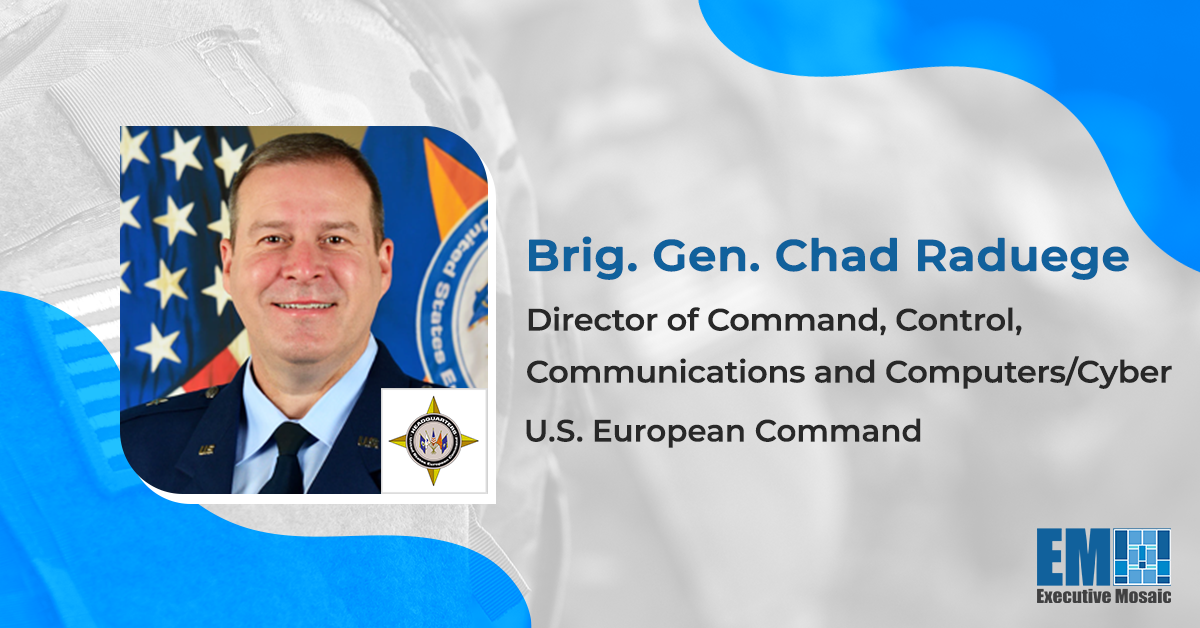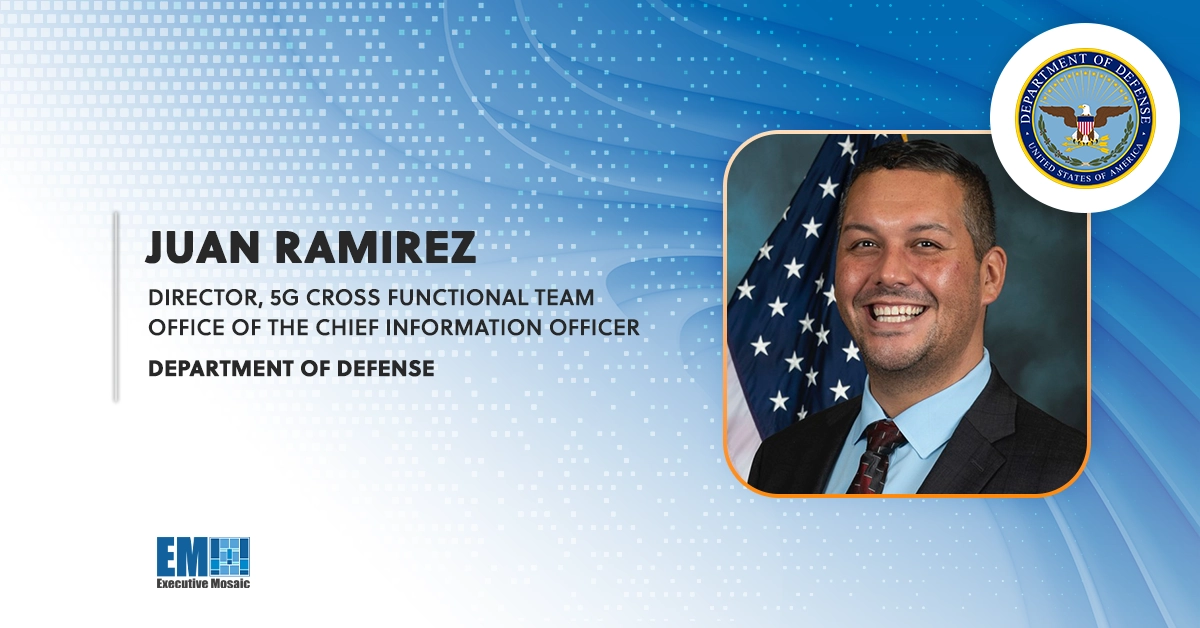As data sharing continues to shape the evolving warfare environment, the full establishment of Joint All-Domain Command and Control, which is intended to radically transform the way U.S. forces and NATO mission partners exchange information, is critical in maintaining an advantage over adversaries, according to Air Force Brig. Gen. Chad Raduege.
Over the past 18 months, Raduege, who currently serves as director of Command, Control, Communications and Computers/Cyber and chief information officer of U.S. European Command, has identified seven key themes that have emerged within the JADC2 initiative, which he discussed during which he discussed during his keynote address Thursday at the Potomac Officers Club’s Mission Partner Environment and JADC2 Intersection forum.
Nearly all of these themes revolve around data, which is growing in importance within the modern warfighting landscape.
“We are rallying around live data, we are rallying around used information and data fields. We are rallying around different aspects of the way that we study and make decisions,” said Raduege.
Evolving from the older idea of network centricity, data centricity has become a priority in the work to optimize joint operations, Raduege said. The concept, he explained, considers where necessary data is located and how it can be most easily accessed.
“We are seeing this play out on the logistics fronts, on the command and control fronts, on the networking communications fronts and on the information sharing fronts. This relearning of a new way of doing business – a new way of fighting war – has been extremely beneficial for us,” he emphasized.
Data, said Raduege, creates a competitive advantage that can better prepare joint forces and mission partners for adversary attacks. To harness its full benefits, data centricity should be integrated with existing military capabilities to consolidate messaging and data sharing into one place, which he said has been an area of success.
A major challenge in streamlining communications with mission partners is that each NATO nation has an individual network. Raduege says that instead of designing a completely new network, connecting these separate lines of communication is the best course of action.
According to Raduege, “the fusion of data can often lead to the confusion of data,” meaning the massive amount of data coming from different sources, such as joint forces, coalitions, industry and the federal government, can be difficult to sort through and dissect.
“Often, you can be overwhelmed by the amount of data that you have. You have to put a framework in place to figure out how to interpret that data, how to best organize it and how to best rally around it,” Raduege stressed.
Another piece involved in the implementation of JADC2 is the need for improved training, which currently uses hypothetical scenarios to prepare military forces for network interruptions during warfighting. Raduege suggests that this training should be modified to actually take communications down to ensure that the warfighter is able to work around these conditions.
Through all of this, Raduege said, a humble approach is important when thinking about current problem sets in conflict environments. This line of thought has helped unify NATO nations and inspired new initiatives as conflicts, such as the Ukraine crisis, have unfolded.
Raduege said that the current level of information sharing between NATO mission partners is “unprecedented” and has improved logistics across the European theater and increased efficiency in supporting Ukraine.
“The data centricity theme is becoming a reality of the current battlefield and something that we are working on a daily basis, not only at the U.S. level,” he emphasized.







